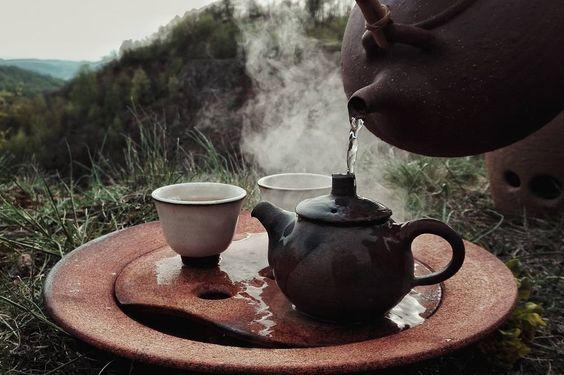The acquisition of a new teapot marks the beginning of a beautiful relationship, one built on shared moments of tranquility and the delightful aroma of freshly brewed tea. However, before embarking on this journey of tea-infused bliss, it’s crucial to understand the importance of preparing your new teapot, a process that significantly impacts the longevity and performance of your brewing vessel. This preparation, often referred to as "seasoning" or "breaking in," varies depending on the material of your teapot.
Why Prepare Your Teapot?
The preparation process serves several important purposes. Firstly, it removes any residual manufacturing chemicals or dust that might affect the taste of your tea. Secondly, it helps to condition the material of your teapot, making it more receptive to the flavors of your tea and preventing unwanted taste transfer. Thirdly, for porous materials like clay, it helps to seal the pores, preventing leaks and maintaining the integrity of the teapot.
Preparing Clay and Ceramic Teapots
Clay and ceramic teapots are popular choices for their ability to retain heat and enhance the flavor of tea. The preparation process typically involves several steps:
- Initial Cleaning: Begin by rinsing your teapot thoroughly with warm water. Avoid using soap or detergents, as these can leave behind a residue that will affect the taste of your tea.
- Initial Steeping: Fill the teapot with hot water, just below boiling point. Let it sit for about 15-20 minutes. This helps to remove any lingering manufacturing residues and to begin opening the pores of the clay. Empty the water and repeat this process two or three times.
- Gentle Brewing: After the initial steeping, brew a pot of a mild tea, such as green tea or white tea. This helps to further cleanse the teapot and introduce a gentle flavor profile. Discard the first infusion.
- Gradual Transition: Over the next few brews, gradually transition to stronger teas, such as oolong or black tea. This helps to condition the pores of the clay and build up a desirable flavor profile in the teapot.
- Regular Use: Consistent use is crucial for properly seasoning a clay or ceramic teapot. The more you use it, the better it will become at enhancing the flavor of your tea.
Preparing Yixing Teapots (Zisha)
Yixing teapots, known for their unique clay and exceptional heat retention, require a slightly more delicate approach to preparation:
- Gentle Rinse: Begin by rinsing the teapot with warm water.
- Initial Brewing: Brew several pots of a very mild tea, such as a light green tea or even just plain hot water. This helps to gently open the pores of the Yixing clay without overwhelming it with strong flavors. Discard each infusion.
- Building Flavor: Gradually introduce stronger teas over several brewing sessions. This helps to build up a unique flavor profile in the teapot, enhancing the taste of your tea over time.
- Avoid Harsh Teas: Avoid using highly acidic or tannic teas during the initial preparation, as these can damage the delicate Yixing clay.
- Proper Storage: When not in use, store your Yixing teapot in a cool, dry place, preferably with a small amount of loose tea leaves inside to maintain its moisture level.
Preparing Glass and Stainless Steel Teapots
Glass and stainless steel teapots are generally less porous and require less extensive preparation. A thorough rinse with warm water is usually sufficient to remove any manufacturing residue. However, brewing a pot or two of a mild tea can still be beneficial to ensure a clean and fresh brewing experience.
Conclusion:
Preparing your new teapot is a vital step in ensuring a long-lasting and enjoyable tea-drinking experience. By following these material-specific guidelines, you can optimize the performance of your teapot and unlock its full potential for enhancing the flavor and aroma of your favorite teas. Remember, patience and consistent use are key to developing a harmonious relationship with your teapot, one that will reward you with countless moments of tea-infused serenity.

